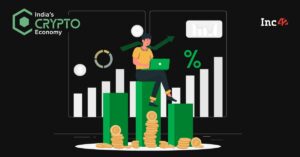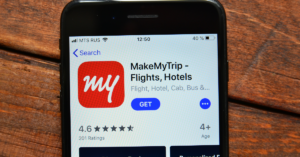For many of those struggling through the difficult year that was 2020, PPP (Loans were a vital part of survival. However, the story of PPP loans and the terms of forgiveness has been turbulent and confusing during a time when small businesses desperately need clarity to know their business will survive. With the CAA (Consolidated Appropriations Act), 2021 there have come modifications to the PPP, known as “PPP2”. For those who are looking to get PPP loans, or already have them, it is worthwhile to understand what these changes entail.
The 2021 version of the CAA was introduced right at the end of 2021, on December 27th. The CAA is a large document, with over 32 divisions – the relevant portion for business and taxpayers are in Division EE and Division N. There were a lot of updates included here, but for businesses, its aim was to allow for another round of PPP, and make that round of PPP tax-deductible.
The Consolidated Appropriations Act
The CAA included a $900 billion dollar relief package, that has a lot of different parts to unpack.
There are a ton of emergency measures included in it, such as the $300 weekly unemployment benefits, but the part more relevant here is the $325 billion in aid for small businesses. Some of this money is going specifically towards low-income and minority communities, and the businesses that operate in them, while a portion is going towards helping shuttered venues such as movie theatres or cultural institutions.
The vast majority, however, is going towards PPP loans as part of “PPP2”
PPP2
These new “PPP2 loans” are going to be available both to first-time borrowers and businesses that had already received a PPP loan. Those who already have a PPP loan may apply for another loan of up to $2 million, as long as they:
- Have 300 or fewer employers,
- Can show they’ve used or will use all of their first PPP loan,
- Can demonstrate a 25% gross revenue decline in any 2020 quarter when compared with the same quarter in 2019.
If a borrower returned all or part of a previous PPP loan they can reapply for the maximum amount available to them.
PPP2 is also opening up the loans to businesses that were previously ineligible to receive the loans, opening up the field to new categories. For example, business leagues (like chambers of commerce, real estate boards, boards of trades, professional football leagues) that are not organized for profit are now eligible for loans, as long as they:
- Have 300 or fewer employees,
- Don’t receive more than 15% of receipts from lobbying,
- Didn’t spend more than $1 million lobbying during the last tax year.
Other businesses that are now permitted to get PPP2 loans include businesses with 500 or fewer employees that are eligible for other SBA 7(a) loans, sole proprietors, independent contractors, eligible self-employed individuals, and not-for-profits. Accommodation and food services operations with fewer than 300 employees per physical location are also eligible.
The Difference between PPP and PPP2 – Recap
While PPP2 is opening up new opportunities, and allowing further relief for those already using PPP, there are some actual differences between the two loans that should be understood by anyone looking to apply for PPP2. For those unfamiliar with PPP, here is a shortlist of the major differences between the two.
PPP
- For businesses of up to 500 employees
- No Revenue Reduction Requirement
- Maximum Loan of up to $10 million
- Payroll Period of either the 2019 or 2020 Financial Year
PPP2
- For businesses of up to 300 employees
- Needs proof of 25% Revenue Reduction compared to the same quarter last year ● Maximum loan of $2 million
- Payroll Period of either the 12 month period prior to when the loan was paid, or the calendar year 2019
Understanding PPP2 Loan Terms
PPP2 offers loan forgiveness for many of the same costs that PPP did, such as payroll, rent, covered mortgage interest, and utilities. However, PPP2 also makes some additions to PPP forgiveness. These include the costs to protect workers from COVID, payments to suppliers that are essential to current operations, and certain other operating costs such as software, cloud computing, and accounting services.
Just like with PPP, PPP2 borrowers will have to spend no less than 60% of the funds on payroll over a covered period of either eight or 24 weeks.
Don’t Miss it – PPP is now Tax-Deductible
One very important part of this new legislation is that it allows business expenses paid with forgiven PPP loans to be tax-deductible. This may lead to some confusion as it overrides previous IRS guidance on the matter, which sought to remove tax deductibility if the loan was intended to be repaid
This ruling is actually retroactive, so it counts for previous and current PPP2 loans. This is big news for PPP accounting and shouldn’t be ignored. At the same time, it should be understood that this is a federal level ruling – individual state tax laws might differ.
Keep Up to Date
The COVID-19 pandemic is an ever-evolving and changing crisis, and so is the response to it. By understanding what changes new legislation brings you can make sure that you are getting the most benefit out of relief loans. The new loans of PPP2 may be giving smaller loans than the first, but their ability to be taken on top of the original PPP and tax deductibility make them worth understanding.
If it’s a lot to parse, an accountant can be the expert to help you understand how to best make use of PPP2.










